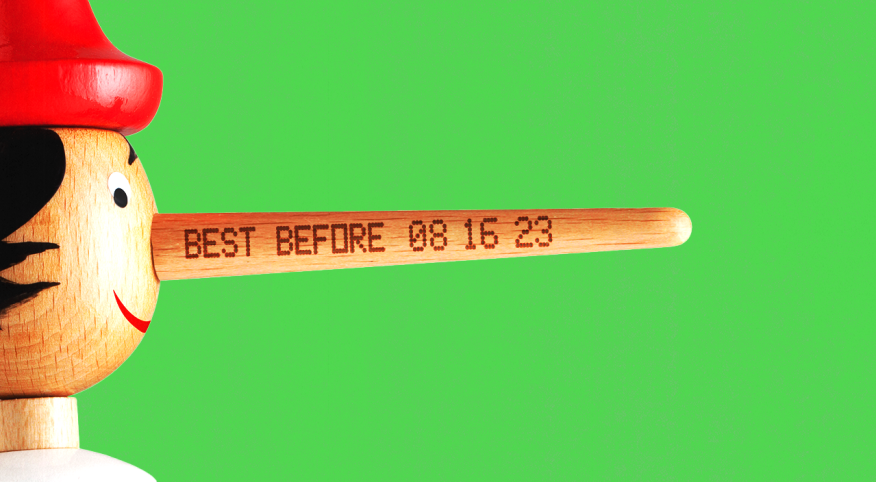Andy Sipowicz didn’t care about sell-by dates, and neither do I.
The star of NYPD Blue would sniff the open carton before pouring milk in his coffee at the precinct house. No squinting at a date stamp and doing math. He had skels to work over.
We should all depend more on our eyes and nose for judging food safety than on the factory stamps saying “sell by” or “use by” or “best by.” Those have next to nothing to do with food safety, experts say.
They’re mere suggestions from food makers — finish that bagged lettuce or bottled OJ by the deadline, and it won’t be too soggy or tangy, if stored properly.
The federal government created an excellent app about this very subject, called FoodKeeper. It tells you how long foods should last and how to store them, everything from anchovies (five years in the can; three or four days if opened and refrigerated) to zucchini (a week, if refrigerated from date of purchase).
Other industries, whether they put it in writing or not, encourage us to swap out products at certain intervals. Sometimes they’re giving us good intel, and sometimes … not so much.
Toothbrush: Three to four months, says the American Dental Association. Frayed bristles are your warning sign — they can’t reach crevices as well.
Kitchen sponge. Every one to two weeks, says Markus Egert, a microbiologist at Furtwangen University in Germany who’s done research on filthy sponges. “They become massively contaminated with microbes — up to 54 billion per cubic centimeter — within a few days,” he says. Don’t bother trying to sanitize them in your dishwasher. “This is a waste of energy, as some microbes will always survive and grow to high numbers again,” Egert tells us.
Pots and pans: The conventional wisdom is every five years, but Bob Blumer, a food and cooking writer for The Arrow, says a better answer is never. “Quality stainless steel and cast-iron pots and pans are built to last — and should outlast you,” he says. As for non-stick pans, “Let them go when they stop letting go of your food."
Razor blades: The American Academy of Dermatology says to change blades or disposable razors every five to seven days, and it’s not just a ploy to make you buy more razors. Blades don’t really go dull — they chip at a microscopic level.
Sunscreen: It lasts at least three years. It’s the law.
Mattress: Old-school traditional mattresses made with innerspring “have the shortest life of all mattresses, lasting about six to eight years,” says Shelby Harris, director of sleep health at Sleepopolis.com and author of The Women’s Guide to Overcoming Insomnia. Latex mattresses have the longest life, lasting 16 to 20 years.
Beer: The horror stories of "skunked" beer is an old wives’ tale, according to Cliff Mori, owner of the Asheville, North Carolina, beer education and brewery tour company BREW-ed. But beer does have an expiration date — four to six months. And it’ll last that long only if it's kept cold. "Warm temperatures speed up the staling reactions exponentially," Mori says. "A beer kept at 95 degrees for just three days can taste noticeably off."
Spices: The typical shelf life is a few months up to six, says Shake Shack culinary director Mark Rosati. He recommends putting a date on a new spice to keep track, and always do a sniff test before using. “If the spices smell aromatic and heady, I know the spice is still good to use,” Rosati says.
Tires: Three to five years if you drive the typical 12,000 to 15,000 miles a year. Even if the tread looks OK, manufacturers say you should replace them after six to 10 years. How to know if the tread is too worn? Stick a penny in the tread upside down — if the top of Abe’s head is visible, the tread is no good. This is one “use-by” date you should take seriously: Worn or underinflated tires sharply raise your risk of a crash.
Running shoes: Those wiry editors at Runner’s World say every 300 to 500 miles, which is about four to six months for a 20-mile-a-week runner. Or instead of doing math, just listen to your legs. Soreness can mean daddy needs a new pair of shoes.
Underwear: Charles Gerba, a microbiologist at the University of Arizona, has researched dirty undies and found that even clean underwear contains about 0.1 grams of feces. But even he doesn’t throw away his underwear “until it has a hole in it,” he says. As long as you wash it with hot water (or bleach if you’ve had diarrhea), you can wear your ratty old underwear “as long as you want,” Gerba says.

Paul Spella/iStock (2)




